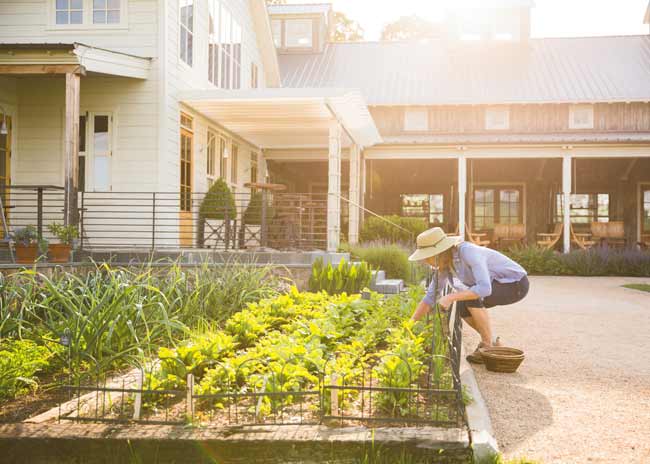Restaurants are increasingly incorporating menu items, experiences and more that unify under the premise of local community.
Fired Up for Local
 Pippin Hill Farms & Vineyards in North Garden, Va provides fresh eggs from its farm-raised chickens.Utilizing regional ingredients and dishes can enhance a foodservice operation’s connection with the community. “Regional U.S. dishes are great as consumers feel connected, and they are often closely related to dishes they know, so they are ready to try them,” says Claire Conaghan, associate director, Datassential.
Pippin Hill Farms & Vineyards in North Garden, Va provides fresh eggs from its farm-raised chickens.Utilizing regional ingredients and dishes can enhance a foodservice operation’s connection with the community. “Regional U.S. dishes are great as consumers feel connected, and they are often closely related to dishes they know, so they are ready to try them,” says Claire Conaghan, associate director, Datassential.
As an example of just how connected regional fare can be, Conaghan mentioned a Datassential webinar that became a bit spirited. One participant from New Mexico declared the area to have the “only green chili,” she says. “Immediately, people were fired up to discuss Colorado green chili.”
Additionally, Conaghan notes that the connections of regionality can go beyond a restaurant’s zip code. Restaurateurs can extend the idea of regional to related dishes outside their market. “In Chicago, we have a few restaurants that highlight U.S. regional sandwiches, and they all happily coexist,” she says. “People who are interested in hyperlocal trends are often interested in hyperlocal trends in general, so going broadly with that theme can also work.”
Community Involvement
Community involvement and hosting community events play important roles in building business, according to Datassential’s September 2022 “Local-Store Marketing” report. Operators feel that the importance of these experiences is increasing in today’s challenging environment, according to the report.
Concept Close-Up
Pippen Hill Farms & Vineyards
 A seasonal garden offering vegetables, edible flowers and microgreens is tended at Pippen Hill Farms.Victoria Cosner, executive chef at the garden-to-table restaurant at Pippin Hill Farms & Vineyards in North Garden, Va., enjoys being able to form menus from what’s growing on the property as well as what local farmers grow for the restaurant. The property includes a seasonal garden with vegetables, edible flowers and microgreens. Eggs come from the chickens on the farm, and honeybees on-site supply honey. Here, she discusses how the culinary farm, winery and restaurant all connect to create unique local experiences.
A seasonal garden offering vegetables, edible flowers and microgreens is tended at Pippen Hill Farms.Victoria Cosner, executive chef at the garden-to-table restaurant at Pippin Hill Farms & Vineyards in North Garden, Va., enjoys being able to form menus from what’s growing on the property as well as what local farmers grow for the restaurant. The property includes a seasonal garden with vegetables, edible flowers and microgreens. Eggs come from the chickens on the farm, and honeybees on-site supply honey. Here, she discusses how the culinary farm, winery and restaurant all connect to create unique local experiences.
Q: How does the idea of “local” connect with the vineyard and restaurant?
A: We are committed to incorporating local experiences into our operation and involve local businesses in our menus and operations to give them exposure and opportunities to grow. For example, we partner with local bakery Cake Bloom for a seasonal wine-pairing event and host cooking classes to showcase local ingredients. Additionally, we host Pippin Pop-Ups, where local farmers and small businesses can set up to sell their products to our guests every Friday during the warmer months.
Q: What are the challenges?
A: Curating new experiences can be a challenge as we never know how they’ll be received. However, we’re constantly able to grow and thrive here, so the benefits always outweigh the challenges.
Q: Any advice for others considering implementing local experiences?
A: Our advice for other operations that are thinking outside of the box is to not be fearful of trying new things and to trust your team. You might have a failure or two, but you learn from those. As long as you are always challenging yourself and trying, that’s where the real win is. Also, purchasing local ingredients is becoming more popular every day and is a great revenue generator.



